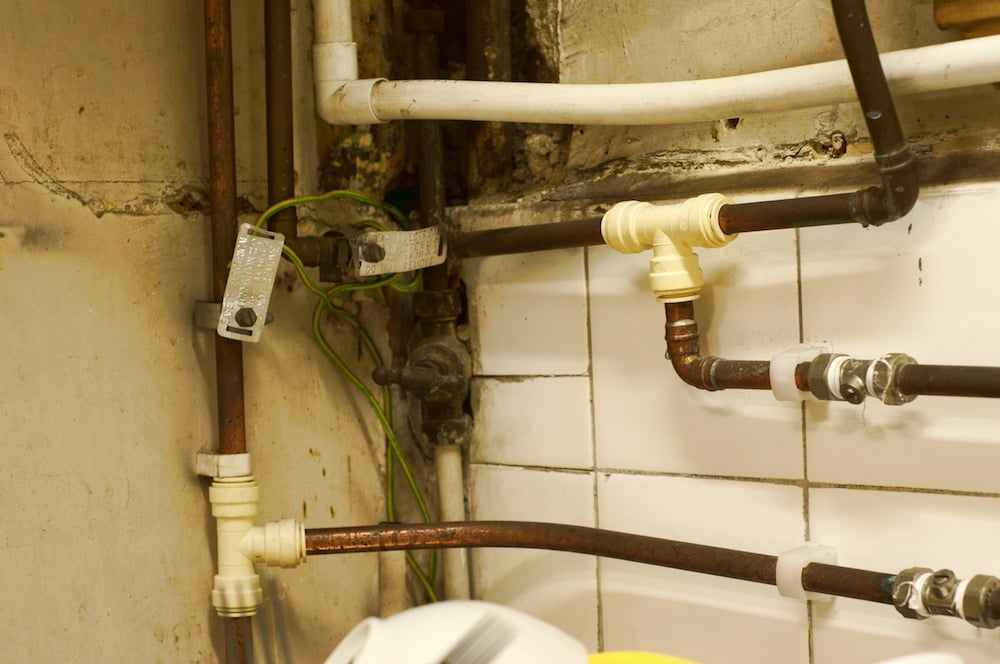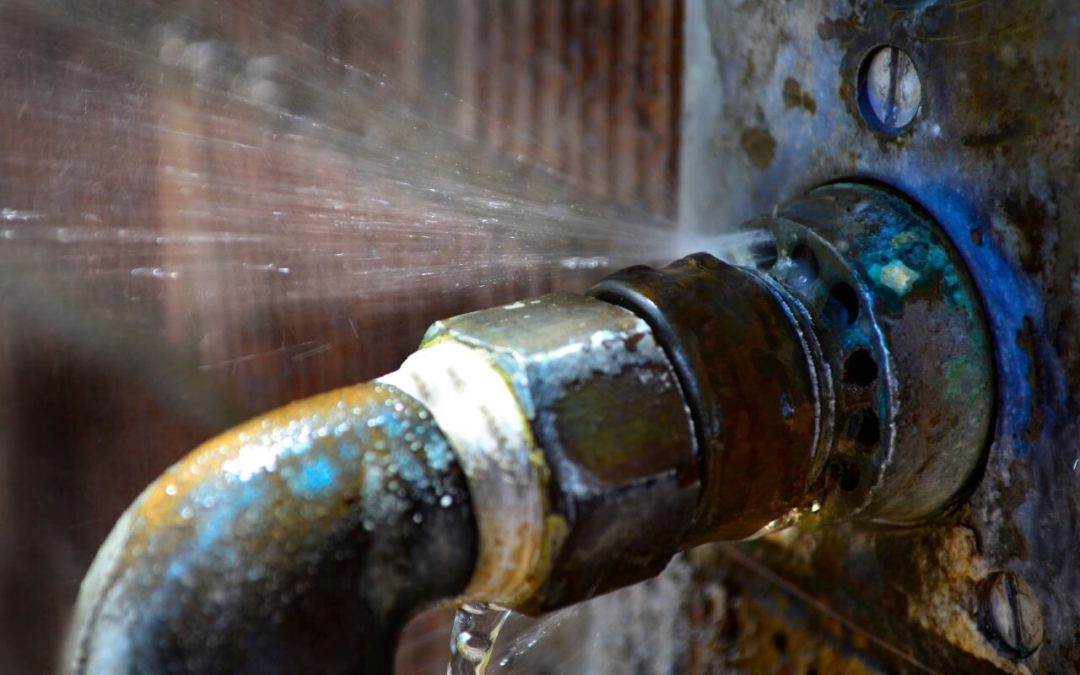Navigating Plumbing Problems in Older Homes: Essential Tips
Navigating Plumbing Problems in Older Homes: Essential Tips
Blog Article
Were you searching for help involving Main Plumbing Issues Found in Old Houses?

Older homes usually feature appeal, character, and background, however they can likewise bring a host of plumbing concerns. Whether you're managing maturing pipes, low water pressure, or leaks, understanding exactly how to attend to these typical troubles is critical to keeping a safe and functional home. In this guide, we'll check out the typical pipes obstacles faced by older homes and give functional solutions to maintain your plumbing in leading shape.
Recognizing Typical Pipes Problems
Aging Pipes
Among the most usual issues in older homes is maturing pipelines. Depending on the period in which your home was developed, the pipes could be made from materials that have actually weakened with time, such as galvanized steel, cast iron, and even lead. These materials can rust, become weak, or develop leaks, leading to water damages and potential health hazards.
Water Top Quality Screening
Older pipelines can affect the top quality of your water. Conduct a water quality examination to check for impurities such as lead, rust, or various other pollutants that might be introduced by maturing pipes.
Solutions for Common Pipes Issues
Changing Aging Pipes
If your home has old, wearing away pipes, take into consideration changing them with modern-day products like copper or PEX. This can be a considerable investment, however it will stop future issues and improve the security and reliability of your pipes system.
Fixing Low Tide Stress
To fix low water stress, start by cleansing or replacing old fixtures and removing mineral accumulation in the pipelines. If the issue lingers, it might be necessary to replace sections of rusty pipes.
Fixing and Replacing Leaking Pipes
For tiny leakages, you can use pipeline clamps or epoxy putty as a short-term solution. Nonetheless, it's best to replace leaking pipelines entirely to avoid additional damage.
Upgrading Components
Upgrading old fixtures to contemporary, water-efficient designs can enhance your home's pipes efficiency and minimize water consumption. Look for components with the WaterSense tag for the very best performance.
Handling Pipe Rust
If your pipelines are corroded, changing them with corrosion-resistant products like copper, PVC, or PEX is the very best remedy. Regular examinations and water high quality upkeep can assist protect against better rust.
Low Tide Pressure
If you're experiencing low water pressure, it could be due to mineral deposits, deterioration inside the pipes, or old components that are no longer operating effectively. This can be a major trouble, particularly in areas like showers and sinks.
Leaking Pipelines
Leaks are one more constant concern in older homes, frequently caused by rusty or worn-out pipelines. Even tiny leakages can lead to significant water damages, mold growth, and boosted water costs otherwise addressed promptly.
Obsolete Components
Out-of-date plumbing fixtures such as faucets, commodes, and showerheads not just look old but may additionally be much less effective, susceptible to leaks, or inappropriate with contemporary plumbing standards.
Pipeline Deterioration
Rust is a typical problem in older pipes, particularly those made from galvanized steel or actors iron. Corroded pipes can restrict water flow, create staining, and ultimately cause leaks or pipe ruptureds.
Analyzing the Problem of Your Plumbing
Evaluating Visible Pipes
Beginning by checking any visible pipelines in your home, such as those in cellars, crawl spaces, or under sinks. Look for indications of corrosion, leakages, or rust, which can suggest underlying issues.
Looking for Leaks
Check for leakages by evaluating areas around taps, bathrooms, and under sinks. You can additionally check your water meter before and after a period of no water utilize to spot hidden leaks.
When to Call a Specialist
While some plumbing problems can be managed with DIY solutions, there are times when it's finest to hire an expert. If you're handling major leakages, comprehensive corrosion, or are unsure about the condition of your pipes, an accredited plumbing professional can provide professional analysis and repair service.
Preventive Maintenance Tips
Normal Evaluations
Routinely evaluate your pipes system for indicators of damage. Catching problems early can prevent costly repair work down the line.
Water Stress Policy
Ensure your water pressure is within the suggested array to avoid worrying your pipes and fixtures. A plumber can set up a stress regulatory authority if needed.
Water Quality Upkeep
Set up water filters or conditioners if your water high quality is poor. This can protect your pipes and components from damage caused by hard water or impurities.
Positive Pipe Substitute
If your home has very old pipes, take into consideration aggressive substitute before significant issues arise. This can conserve you from emergency situation repair services and water damages.
Final thought
Handling plumbing issues in older homes needs a mix of alertness, preventive upkeep, and prompt upgrades. By comprehending the usual obstacles and understanding when to seek expert aid, you can guarantee your pipes system remains practical and reliable for years to come.
Common Plumbing Issues in Older Homes and How to Fix Them
Owning an older home in Australia comes with its unique charm and a set of challenges, especially when it comes to plumbing. The Sunshine Coast has many older properties that can harbour plumbing problems that aren t just inconvenient but potentially costly. Here s a look at some common plumbing issues in older homes and expert advice on how to handle them.
Outdated Piping Materials
Many older homes were built with galvanised steel, cast iron, or even lead pipes, materials that are far from ideal by today s standards. Galvanised pipes are prone to corrosion and clogging, while lead pipes pose serious health risks.
How to Fix:
Replacing old pipes is a job for a professional. Upgrading to copper or PVC piping not only enhances water quality and flow but also increases the property s safety and value. If you suspect your home has outdated materials, a licensed plumber can conduct a thorough inspection and recommend the best course of action.
Corrosion and Pipe Degradation
Over time, exposure to water and minerals can cause pipes to corrode, leading to leaks, bursts, and water contamination. Corrosion is especially common in homes over 50 years old.
How to Fix:
Regular inspections can catch early signs of corrosion. If corrosion is found, the affected section of piping often needs to be replaced. For homes with extensive corrosion, a complete plumbing overhaul might be necessary. It s crucial to consult with a plumbing expert to understand the extent of the issue.
Tree Root Intrusion
Older neighbourhoods usually have mature trees whose roots can intrude into pipe lines, causing blockages or damage. This is particularly problematic for sewer lines, where roots seek out water sources.
How to Fix:
A plumber can use a specialised camera to inspect sewer lines for root intrusion. If roots are a problem, methods like root cutting or hydro-jetting can clear the obstruction. In severe cases, part of the pipe may need replacing. Consider root barriers around the piping to prevent future issues.
Inadequate Water Pressure
Low water pressure in older homes can be due to various factors, including corroded water lines, sediment build-up in pipes, or outdated fixtures.
How to Fix:
First, check if the low pressure is isolated to one area or throughout the house. Replacing old fixtures can sometimes resolve the issue. However, if the problem is more widespread, it might be due to sediment or corrosion. Flushing the system or replacing the affected pipes usually restores normal pressure. Again, a professional assessment is advisable.
Outdated Fixtures
Older homes often feature fixtures that are not only visually dated but functionally inefficient. This includes everything from toilets and taps to showerheads and washing machine hoses.
How to Fix:
Updating these fixtures can improve both water efficiency and the aesthetic appeal of your home. Modern fixtures are designed to conserve water, which can significantly reduce your water bill and lessen your environmental impact.
Conclusion
Maintaining the plumbing in an older home requires a proactive approach. Regular checks and updates are key to preserving these beautiful properties. If you re facing plumbing issues in your older home, it s best to call on experienced professionals like Green & Gold Plumbing & Gas. With the right expertise, even the most daunting plumbing problems can be resolved, ensuring that your home s character is maintained while its functionality is enhanced.
https://gandgplumbing.com.au/common-plumbing-issues-in-older-homes-and-how-to-fix-them/

I recently found that page on Plumbing Problems In Old Homes when doing a lookup on the web. Sharing is nice. Helping others is fun. We thank you for reading our article about .
Book Inspection Report this page